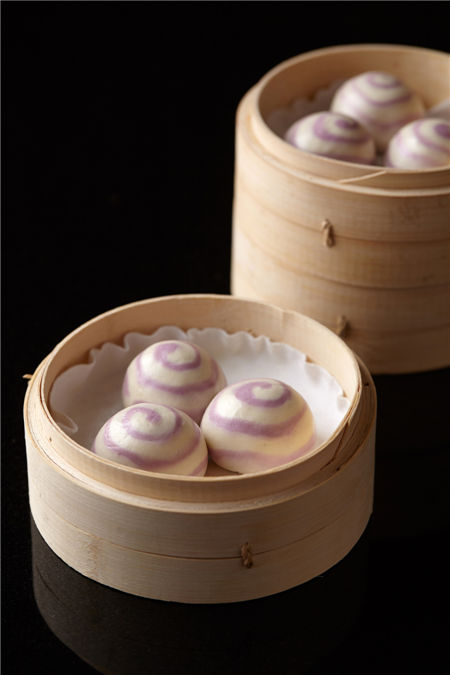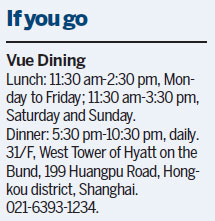Bite-sized delights
 |
|
Sesame peanut bun |
On the other hand, his three-year experience of working with Hong Kong master chef Dai Long pushed Zeng to be as creative as possible with the palm-sized paper-thin sheet of dough skin.
He says Dai always told him: "You are just making dim sums, not atomic bombs. Try whatever comes to your mind." When nothing came to his mind, Zeng got yelled at by China's version of British celebrity chef Gordon Ramsay.
Dai is a legendary chef in China, believed to be the prototype of the country's first and by far most famous comedy movie God of Cookery by Stephen Chow. His theory of Chinese fried rice is widely quoted and used as a textbook guideline. That is: Instead of using freshly steamed rice, it's better to use overnight rice so that every particle of the rice is dry enough and can fully absorb the egg yolk and other flavors when fried the next day.
Zeng says he never minded "being yelled at" by Dai: Having the master's attention, he says, was like winning the lottery every day.
If you are interested in the flavor of a thousand-year-old tradition, try the sesame and peanut bun. Instead of using ordinary lard to mix the baked walnuts, peanuts, sesame and other fillings he uses for various buns, Zeng has gone to the old-fashioned pig caul, a membrane from the intestines that is much fatter but less greasy than lard.
"The flavor of the caul is subtle, if any. But it offers all the nuts a special moisture that can makes them flowing and fragrant," Zeng explains. It is calculated that every pig could produce a maximum of 1 kilogram of caul, which can moisten the fillings of 10 buns.
"There are so many things from nature and our tradition for me to wrap up in the sheet of dough skin," the chef says.
Contact the writer at xujunqian@chinadaily.com.cn

















